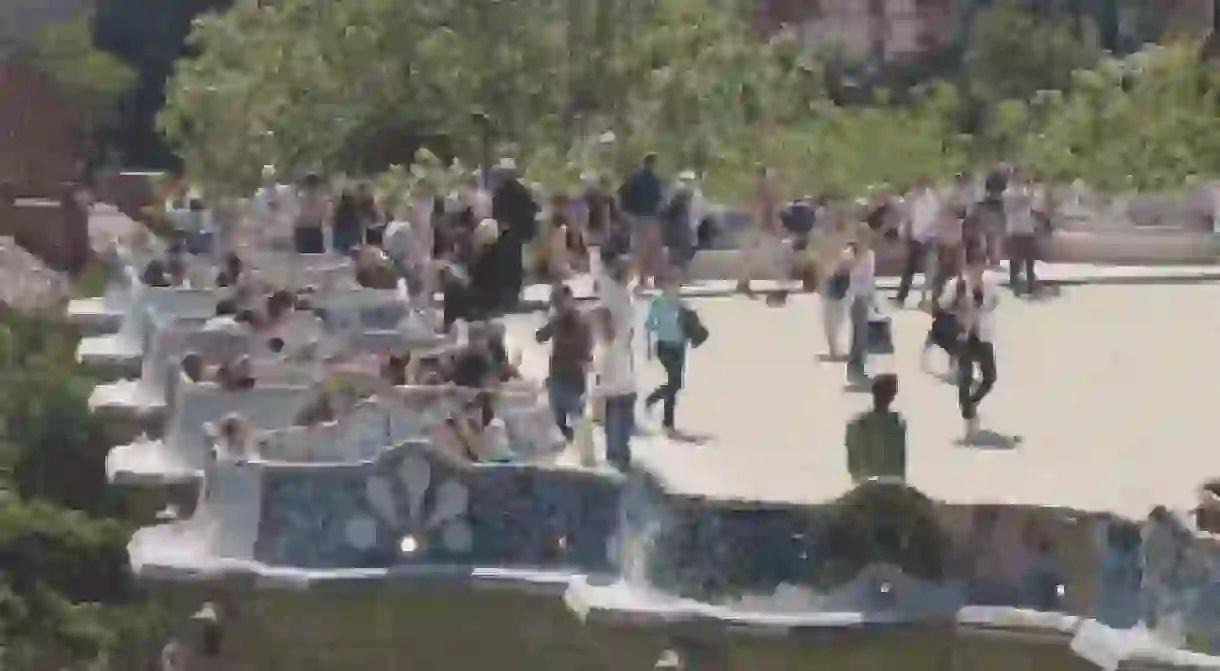A Guide to Gaudí Architecture in Barcelona

Think about Barcelona, and you think about Catalan Modernist architect Antoni Gaudí, who was responsible for designing many of the city’s most recognised landmarks. Take a virtual tour of the Catalan capital to see some of his most awe-inspiring buildings.
Antoni Gaudí was born in the Catalan town of Reus in 1852 and later moved to Barcelona to study teaching. There he became fascinated by the ideals of utopian socialism, and began to develop the idea of designing new buildings that would embody principles of equality and freedom. He went on to study architecture at the prestigious La Llotja school in Barcelona, the same school which would later receive a young Pablo Picasso.
Alongside his political convictions, Gaudí was a deeply religious individual, and was inspired by his faith and the teachings of the Catholic church throughout his life. He died alone on the streets of Barcelona after he was hit by a tram. No one came to his aid, as he was mistaken for a beggar because of his modest dress – unusual at a time when wealth tended to be displayed ostentatiously.
The most famous example of Gaudí’s work is the Sagrada Família, a spectacular church that has been under construction for over 100 years and yet, despite being incomplete, has already been designated a UNESCO World Heritage Site. Its is Barcelona’s most popular tourist sight, attracting over 3 million visitors each year while also being used for masses and other religious celebrations.
Further out of town, on the outskirts of the neighbourhood of Gracià, lies the Park Güell, which has one of the most interesting stories of any Gaudí design. It was originally conceived as a new utopian housing estate based on the British garden city movement – hence the use of the English spelling ‘park’ instead of the Catalan ‘parc‘. After building a model home and the foundations for the marketplace, public square and recreational gardens, the project proved unsuccessful and was eventually abandoned. Later, the local council decided to open the space to the public and converted it into a park.
Much less famous is Bellesguard, a striking manor house that stands in the upmarket neighbourhood of Sarrià-Sant Gervasi. Erected on the site of a Medieval castle that had fallen into ruin, the building was designed as a second home for a rich local family. However, Gaudí spent so much time on the detail of the house that it wasn’t completed in time for the family to live there.
The Passeig de Gracià – Barcelona’s luxury shopping street – is home to two of Gaudí’s designs: the Casa Batlló and the Casa Milà. The Casa Batlló is one of the most iconic of all Gaudí’s buildings and a fine example of Catalan Modernism, boasting a colourful exterior and unique design that have earned it the nicknames of Casa del Drac, ‘house of the dragon’, and Casa dels Ossos, ‘house of bones’. A short walk up from the Casa Batlló takes you to the Casa Milà, popularly named La Pedrera – ‘the quarry’ – because of its striking rugged appearance.













